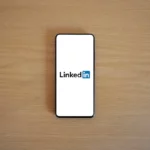There’s something about a good cup of coffee that makes conversations flow effortlessly, and today was one of those days. I found myself at my local café, catching up with my friend Alex, who’s been working on refining their brand’s visual presence on social media. As the aroma of freshly ground beans enveloped us, we dived into the nuances of how visuals can speak volumes about a brand’s voice.
“Why visuals?” I asked, stirring my latte. Alex leaned back, eyes gleaming with enthusiasm. “It’s simple,” they said. “Visuals are like the silent ambassadors of our brand. They convey our message even before a single word is read. But it’s not just about pretty pictures; it’s about consistency and alignment with our brand voice.”
Understanding Your Brand Voice
The first thing Alex emphasised was understanding the brand voice. This isn’t just about logos and colours; it’s the persona of your brand. Is it quirky and fun, or is it more professional and authoritative? Alex shared an excellent tip: create a mood board. By collating images, textures, and colours that resonate with your brand’s personality, you lay the groundwork for your visual strategy.
Alex showed me their mood board on their tablet—it was a beautiful blend of pastels and bold shapes, perfectly mirroring the playful yet sophisticated tone of their brand. “This,” they said, “is where our visual journey begins.”
Creating Consistent Visual Elements
Next, we discussed the importance of consistency. “Your visuals should be instantly recognisable,” Alex explained. “Think of how you can identify Coca-Cola by just the font or Apple’s sleek design elements.” To achieve this, they suggested creating a style guide that includes your chosen colour palette, fonts, and other design elements.
Alex used tools like Canva and Adobe Spark to maintain consistency. They showed me how they applied the same filter across all their photos, ensuring a cohesive look. It’s about creating a visual narrative that ties every piece of content back to the brand’s core message.
The Power of Imagery and Graphics
“Stock photos are great, but original content is king,” Alex said, stressing the importance of authenticity. They recommended investing in a good camera or even using a smartphone with a decent camera to capture original images that align with brand values. Alex also pointed out the effectiveness of graphics and infographics in conveying complex information in a digestible format.
Alex’s company often shares infographics on sustainability, which are not just informative but also visually engaging. They advised using tools like Piktochart or Venngage for creating these graphics, as they offer templates that can be customised to fit your brand aesthetics.
Engaging Through Video Content
As our cups emptied, the discussion turned to video content. “Videos are a game-changer,” Alex said. “They allow for storytelling that’s more engaging than static images.” They shared how their brand leveraged short, impactful videos on platforms like Instagram and TikTok, which have significantly boosted engagement rates.
Using apps like InShot for editing and platforms like YouTube for longer content, they found a way to tell their brand story through dynamic visuals. Alex highlighted the importance of keeping videos aligned with the brand voice, whether it’s through the tone of the narration or the style of the animation.
Measuring and Adapting Your Strategy
Finally, Alex touched on the importance of analytics. “It’s not just about creating content; it’s about understanding what resonates with your audience,” they said. By using analytics tools on platforms like Instagram and Facebook, Alex regularly reviews which visuals perform best and adapts their strategy accordingly.
“Trial and error is part of the process,” Alex smiled. “But data-driven decisions help us fine-tune our approach.”
As we wrapped up, Alex summarised their journey. “Visuals are more than just eye candy; they’re a critical aspect of how we communicate with our audience. By staying true to our brand voice and being consistent, we create a visual environment that our audience loves and trusts.”
So, the next time you scroll through your social media feed, consider how visuals are quietly yet powerfully shaping your perception of each brand. With the insights from my chat with Alex, I feel equipped to help any brand find their visual voice in the crowded social media space. Remember, it’s not just about making your feed look good—it’s about creating a visual language that speaks to your audience’s heart.











